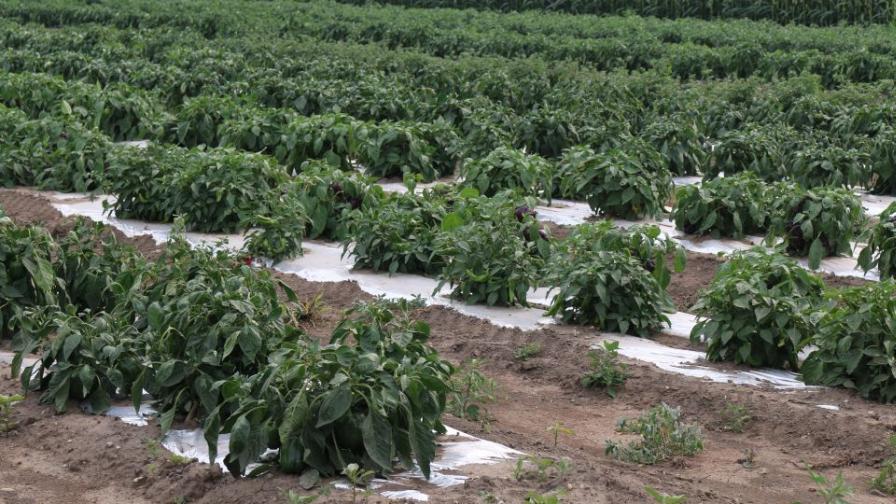Why Von Bergen’s Country Market Grows With Different Colored Plastic Mulch

A brighter red tomato from red mulch? That seems to be the case at Von Bergen’s Country Market.
Photo by Carol Miller
If you visit Von Bergen’s Country Market’s growing division in Hebron, IL, you will see the crops growing with different colored plastic mulch underneath. In addition to the traditional black plastics, you will see red plastic under tomatoes and silver plastic under pepper crops.
In a recent visit to the farm, we asked Quentin Von Bergen, Grower at Von Bergen’s Country Market, a family-owned farm and farm market, what was the reason for the colorful plastics.
Why Different Colors?
It started about 10 years ago, according to Von Bergen, when the farm invited the University of Illinois Extension to help improve its crop yields.
The two focus crops were tomatoes and peppers. They tested red plastic underneath tomato crops and silver plastic under their pepper crops.
The researchers then compared these plastics’ performance against traditional black mulch plastic.
“We got a brighter red tomato off of the red plastic versus black plastic,” Von Bergen says.
And a redder tomato results in better sales at the family’s popular on-farm market.
Silver mulch results in larger fruit and drives away insects. Von Bergen says he grew peppers on black mulch last year and gained the benefits of moisture retention and weed suppression. But this year’s crop on silver is yielding larger, healthy fruit, so he will likely use silver mulch on other crops in the future.

Silver mulch is the preferred plastic mulch this season on peppers at Von Bergen’s Country Market.
Photo by Carol Miller
So, What Is the Science Behind This?
Two factors affected the results, Von Bergen says.
“The light that reflected kept the bugs off. [The crops] also benefited from the extra sunlight being reflected while they were young,” he says.
USDA published a separate study (in 1998) that found a similar reflected light benefit for red mulch. Tomato yields over red plastic increased by 20% compared to black plastic.
The theory is that the albedo, or light reflection of the plastic, gave the tomato crops an extra chance to photosynthesize sunlight it may have missed. The red color also helped reflect far-red light, which is beneficial to photosynthesis, according to USDA.
What Does the Future Hold for Von Bergen?
The results have been so great for Von Bergen’s crop yields that he plans to continue experimenting with colored plastic mulch. The crop yields also have offset the initial expense of the plastics, Von Bergen says.
“[The plastics] are a bit more expensive than just the standard black plastics,” Von Bergen says. But having a nicer tomato and keeping bugs out of the peppers have made it worth the cost.”
While there are currently no plans for new trials, Von Bergen voiced his desire to grow onions and eggplants silver and red plastics, respectively.
“I have heard that you can get better yields on eggplant if you use red plastic underneath,” says Von Bergen. “I think silver plastic under onions may help with keeping bugs away as well.”










